This female light morph red-tail is the mate of the male rufous morph I posted photos of yesterday.
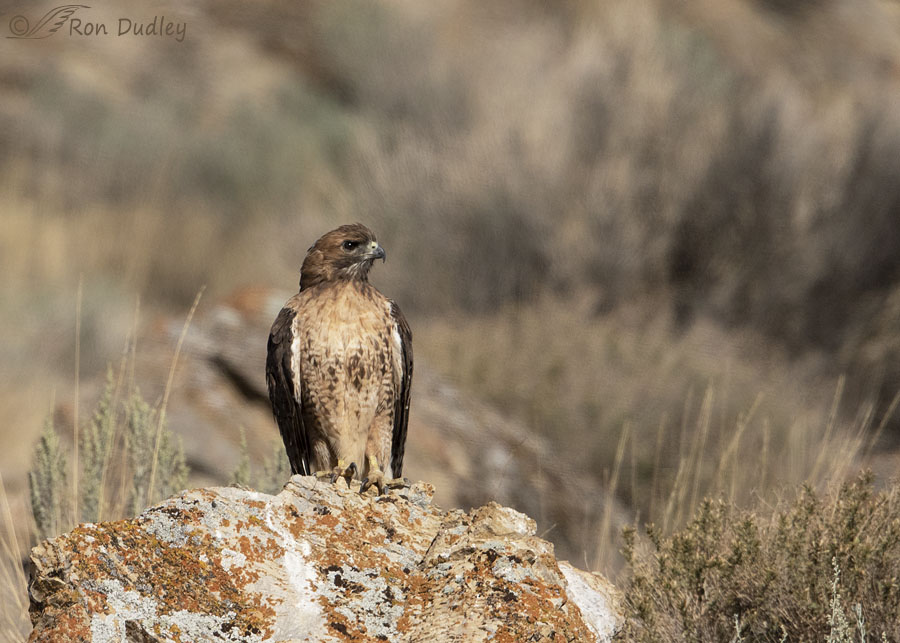
1/5000, f/6.3, ISO 640, Canon 7D Mark II, Canon EF 500mm f/4L IS II USM + EF 1.4 III Extender, not baited, set up or called in
I’ve photographed one or both of them several times this summer and fall and two days ago I found them again. She was perched here for quite a while while her rufous mate was perched far away on the other side of a cliff in the direction she’s looking. After a while I could hear him calling, presumably to her, so I believe he had flown and landed closer to her but I still couldn’t see him.
The following six images are sequential photos in a burst with no skips.
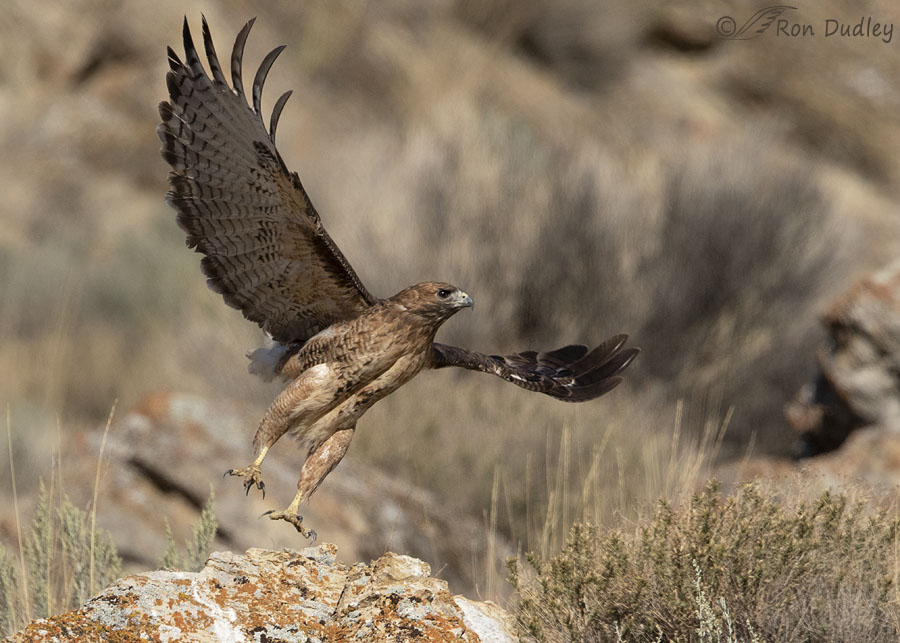
1/5000, f/6.3, ISO 640, Canon 7D Mark II, Canon EF 500mm f/4L IS II USM + EF 1.4 III Extender, not baited, set up or called in
Eventually she took off in his general direction.
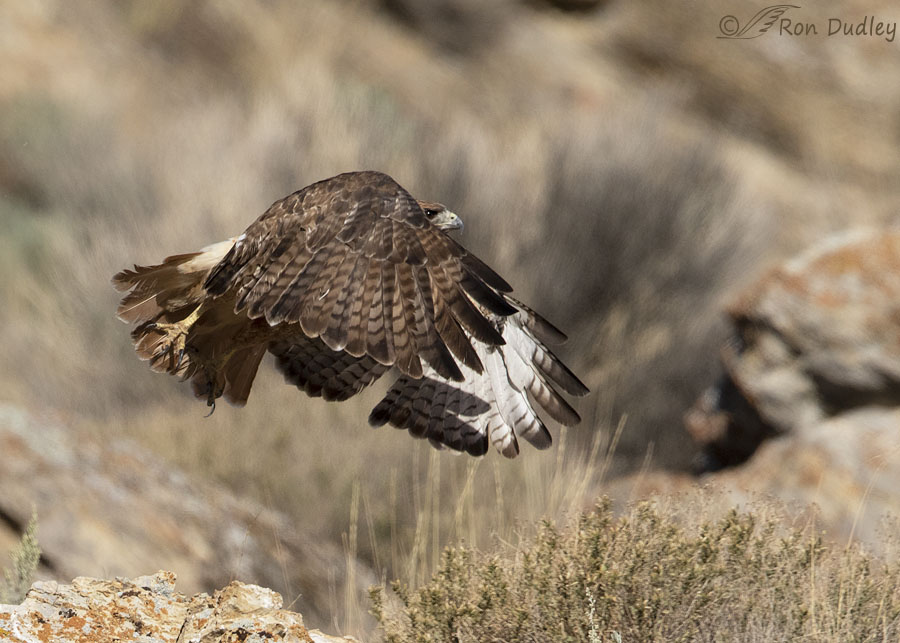
1/5000, f/6.3, ISO 640, Canon 7D Mark II, Canon EF 500mm f/4L IS II USM + EF 1.4 III Extender, not baited, set up or called in
In the next shot we get the peekaboo look.
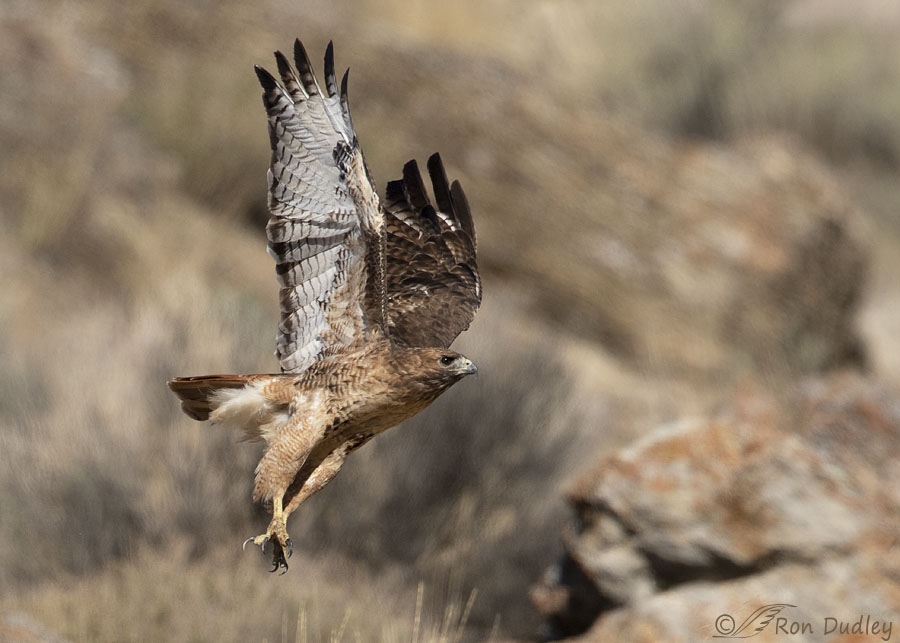
1/5000, f/6.3, ISO 640, Canon 7D Mark II, Canon EF 500mm f/4L IS II USM + EF 1.4 III Extender, not baited, set up or called in
Reaching for some bigtime air.
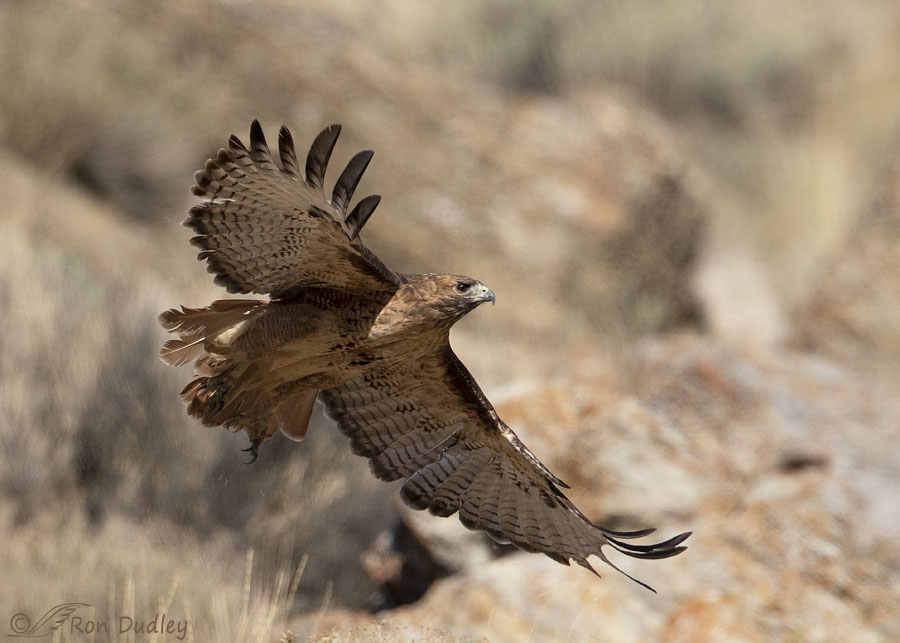
1/5000, f/6.3, ISO 640, Canon 7D Mark II, Canon EF 500mm f/4L IS II USM + EF 1.4 III Extender, not baited, set up or called in
She flared her tail as she began a shallow bank to her left. That tail looks pretty beat up, probably due to wear and molt.
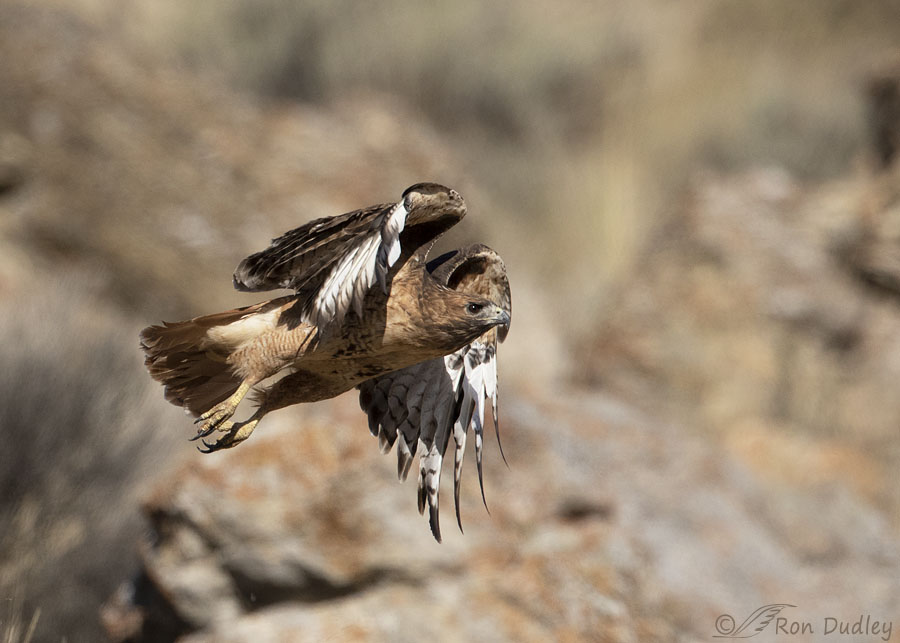
1/5000, f/6.3, ISO 640, Canon 7D Mark II, Canon EF 500mm f/4L IS II USM + EF 1.4 III Extender, not baited, set up or called in
I think this flight posture illustrates her determination and her focus.
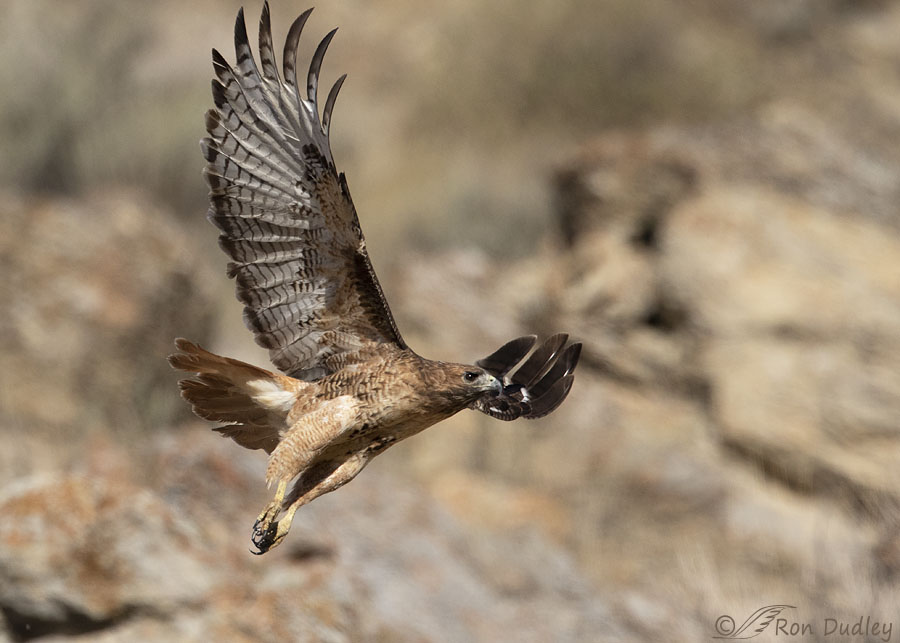
1/5000, f/6.3, ISO 640, Canon 7D Mark II, Canon EF 500mm f/4L IS II USM + EF 1.4 III Extender, not baited, set up or called in
Well, you knew I couldn’t photograph an entire flight series without clipping a wing. All I clipped is a few pixels of a single primary but a clip is a clip. I still like the shot.
I got quite a few photos of her in flight after this one but she started to turn slightly away from me and to be honest, many of them weren’t as sharp as I like. And yes, in those shots I clipped or cut off more body parts.
Mated Red-tailed Hawks remain together throughout the year so I’m hoping these two will continue to hang out in this area for the winter and raise a family next spring and summer. In this devastating drought it’s one of the few areas around here that appears to have enough voles to keep an entire family of hawks adequately fed. And on some level these hawks seem to know it.
On this morning I photographed the male eating a vole so I’m at least slightly optimistic.
Ron


Awesome series Ron! Thanks for sharing!
Charlotte Norton
Beautiful images, they make it look so easy.
Interesting that the male appears to be much darker than the female. Just emphasizes their bewildering color variability. The last photo is a great illustration of the dark patagial bar, which, because it stood out so much I checked BotW and Jerry Ligouri’s books, and found that it is helpful in identification. Thanks for that!
Jerry’s quite the resource isn’t he, Lyle.
She’s a beauty, scraggly tail and all. Glad they’re finding some food in the area and hope that continues.
We had lots of lightning and window-rattling thunder yesterday, but very little rain to show for it. Only about 0.2 inches — just enough to make the car look horrible. Definitely a show-over-substance storm (reminds me of my former school district…).
Thanks, Marty, One of my FB friends posted a photo of your lightning storm last night. Until I saw it and read what she said about it I’d forgotten how unusual those kinds of storms are in much of So Cal.
Majestic. Magnificent (despite the moult). Marvellous. Many thanks.
Thanks for the triple M’s, EC. Or quadruple M’s, depending on how you look at it.
Thanks for giving us the full Feathered Photography experience with this pair! Love these photos of her, particularly the “peekaboo” shot, the way those beautiful wings are folded around her. But interesting that her tail is so much shabbier looking than his, which we got a great view of in yesterday’s first image.
Yes, it’s interesting about the differences in tail conditions isn’t it Chris. Molt timing often varies significantly so I’d guess that explains it. But maybe not…
I learn something and see beauty from you everyday.
Thank You and Take Care,
Kaye
Much appreciated, Kaye.
What a really terrific series of this magnificent raptor!
Outstanding focus throughout and even kept the catchlight as she burst away.
Thank you, Ron, for continuing to share your work.
Thanks very much, Wally.
That hardly qualifies as a clip. Seven consecutive shots full in frame. That is really hard. I am very happy if I get three. I have always like that 2nd position in a take off where the wings come down and you often get that peekaboo look or sometimes not. Outstanding series.
“That hardly qualifies as a clip”
That’s part of the reason it hurts, Everett. So damn close and I had oodles of room at the bottom of the frame. As you know, it isn’t easy to keep a bird in flight in frame. And in focus…
I especially enjoy shot #2 for the way that it shows the powerful assist that
the legs give the bird’s wings in its launch…..those are mighty well-developed
legs and feet !
Thank you, Kris.
Beautiful! Glad there is an area that can support them and a family. The action of the wings through their full range is impressive!
The action of the wings through their full range is impressive! 
“Glad there is an area that can support them and a family”
I only hope that’s true, Judy. I don’t know it for fact but the evidence appears to point that way. Maybe they’ll be gone tomorrow but I sure hope not.
Nice shots, I admire your work, altho if you are like me it isn’t work it is more like “playtime”. Keeping praying that the dry weather will end soon! Stay Safe!!!!
Thank you, Jim. My time in the field with birds is my salvation. It takes my mind completely off the troubles of the world, including my own, and these days that isn’t easy to do.